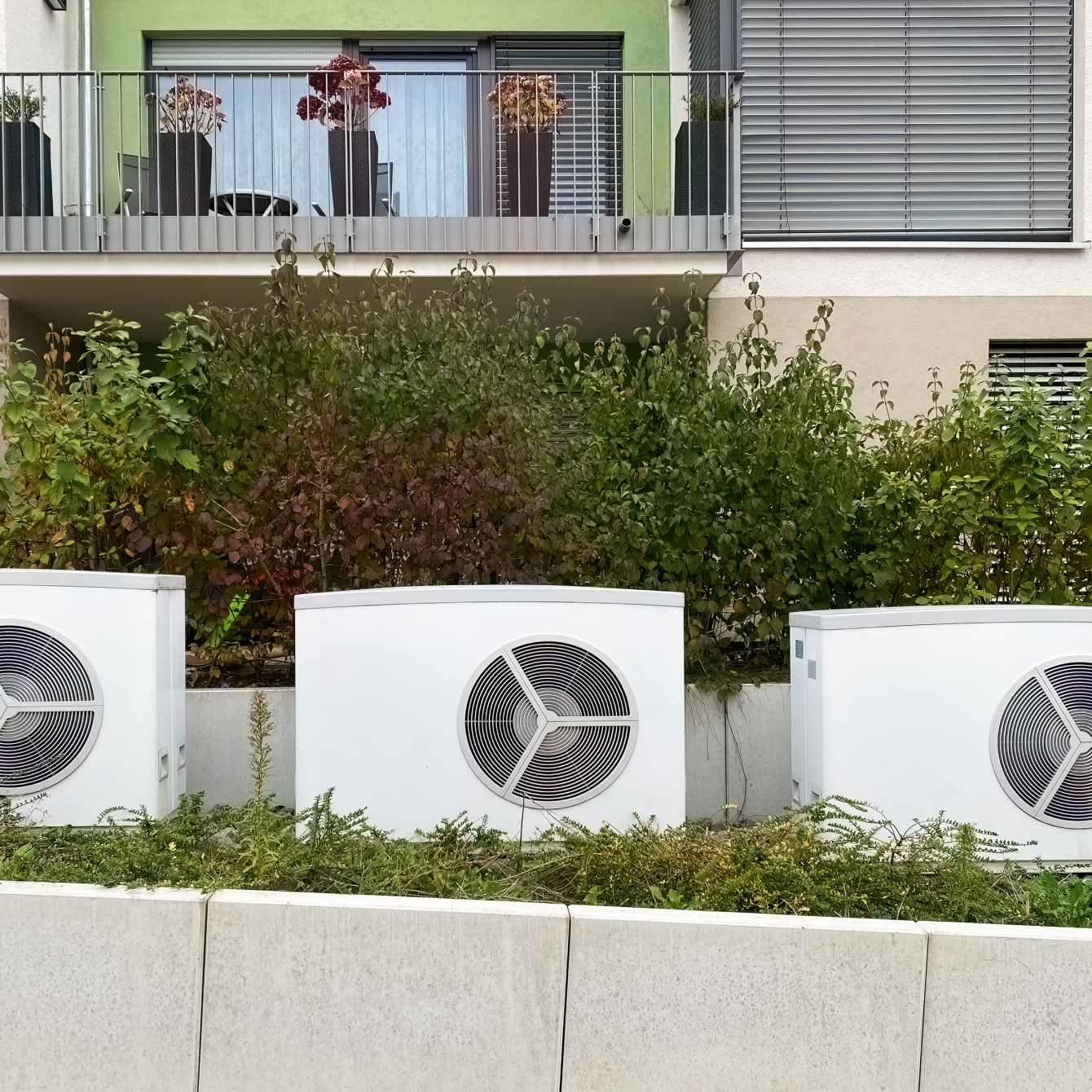Cooling with a heat pump: Is that possible?

In summer, temperatures rise and the desire for pleasant coolness within your own four walls. But do you really need air conditioning — or can the heat pump do more than just heat? In this article, you will find out whether and how you can cool efficiently with heat pumps.
Can a heat pump also cool?
A heat pump can also cool if it is designed for cooling mode. This is possible with reversible heat pumps. The prerequisites are suitable heating surfaces, a controller with cooling function and condensate management to prevent moisture damage.
How does cooling with a heat pump work?
Cooling with a heat pump works differently depending on the type. Air-water heat pumps can actively cool like an air conditioner, while geothermal and groundwater heat pumps usually passively cool by using the natural coolness of the ground or groundwater.
Active cooling
During active cooling, the heat pump works like an air conditioner. The refrigeration cycle is reversed so that heat is absorbed from inside the building and released to the outside. To do this, the compressor is switched on, which pumps refrigerant through the system.
This technology is typical for air-water heat pumps. Efficient operation requires a suitable distribution system such as floor heating or fan coil units. Radiators are usually not suitable because they do not provide sufficient cooling capacity and cause condensation problems.
Passive cooling
Passive cooling uses the natural coolness of the soil or groundwater without the compressor running. The circulation pump moves water through the system. The heating water is delivered to the cold ground or water via a heat exchanger. This type of natural cooling is particularly efficient and uses hardly any electricity. However, the cooling capacity is limited.
How much cooling capacity does a house need?
A house usually requires between 60 and 100 watts per square meter of cooling capacity. For a house of 150 m², this corresponds to around 9 to 15 kilowatts. The exact requirement depends on factors such as insulation standard, window size and internal heat load and should be determined by calculating the cooling load.
How many degrees can the heat pump cool?
A heat pump can lower the room temperature by around 2 to 7 degrees Celsius. With active cooling, reductions of 5 to 7 degrees Celsius are possible, similar to air conditioning systems. Passive cooling usually reaches a reduction of 2 to 4 degrees Celsius, depending on the soil or groundwater temperature.
How much does a heat pump with cooling function cost?
Depending on the type and output, a heat pump with a cooling function costs between 15,000 and 25,000 euros including installation. The surcharge compared to a pure heating heat pump is usually 2,000 to 4,000 euros, depending on the system, the control system and the structural requirements.
How much does cooling with a heat pump cost?
The operating costs for cooling with a heat pump are usually between 50 and 200 euros per year. Passive cooling causes hardly any electricity costs, as only the circulation pump runs. Active cooling is more expensive due to the operation of the compressor and amounts to up to 200 euros per year, depending on the duration and electricity price.
Which heating systems are suitable for cooling?
Panel heating systems such as floor, wall or ceiling heating systems are particularly suitable for cooling with a heat pump, as they work over a large area and prevent the formation of condensate. Fan coil units and special low-temperature radiators are also possible, as they offer active air movement or sufficient space. Normal radiators are not suitable.
What must be considered when cooling with a heat pump?
When cooling with a heat pump, certain technical requirements must be met and structural aspects must be taken into account that ensure efficient cooling, damage must be avoided:
- Dew point monitoring: Prevents condensation on heating surfaces and protects against moisture damage.
- Suitable heating system: Panel heating systems, fan coil units or special heat pump radiators are required.
- Condensate discharge: With active cooling, the resulting Condensed water from the heat pump be reliably removed.
- Intelligent control: Regulates cooling mode according to room temperature, outdoor temperature and humidity.
- Good building envelope: Insulation and shading reduce cooling requirements and lower operating costs.
- Professional planning: The system must be designed for cooling, including piping and control.
Can cooling be retrofitted?
A cooling function can be retrofitted to many heat pumps. This requires a 4-way valve, a second expansion valve, a controller with cooling mode, sensors for dew point monitoring and a condensate drain. The costs range from 1,000 to 3,500 euros.
Does the heat pump automatically switch to cooling mode?
Whether the heat pump automatically switches to cooling mode depends on the model and the controller. Many modern systems offer automatic switching when the set temperature is exceeded. A prerequisite is suitable control with room sensors, dew point monitoring and cooling approval by the user.
Heat pump vs. air conditioner: Which is better?
Heat pumps cool more sustainably and efficiently with a good building envelope, but are only suitable with suitable heating surfaces. Air conditioners offer greater cooling even when hot, but cause higher electricity costs and more CO₂. The best choice depends on the home, comfort requirements and system.
The following is a comparison of both options:
Book a demo now and test it for free
Take the opportunity to test the autarc software free of charge for 14 days. Set up in just 3 minutes, ready for immediate use — without any installation effort. Can be canceled at any time. Book your free demo now and start with a digital cooling load calculation.
%25203%2520(1).webp)